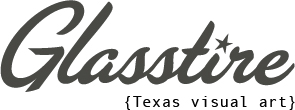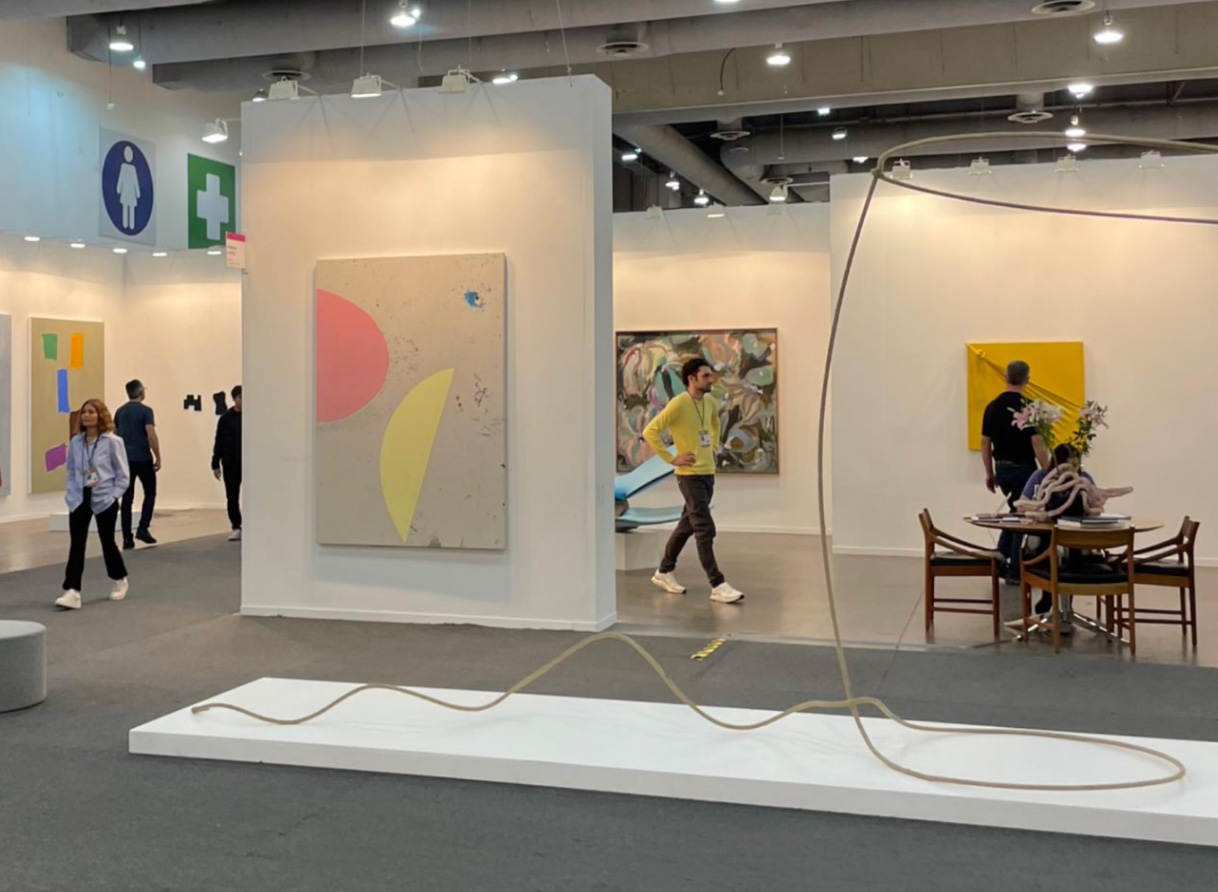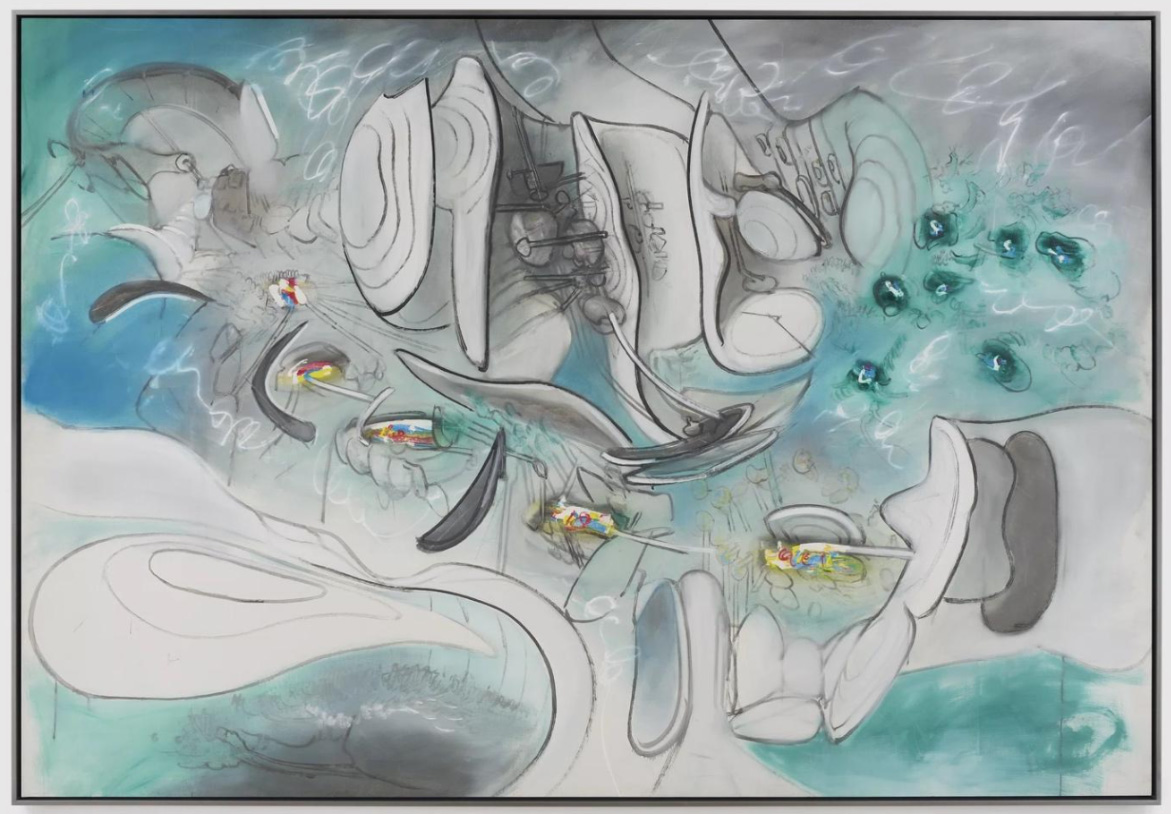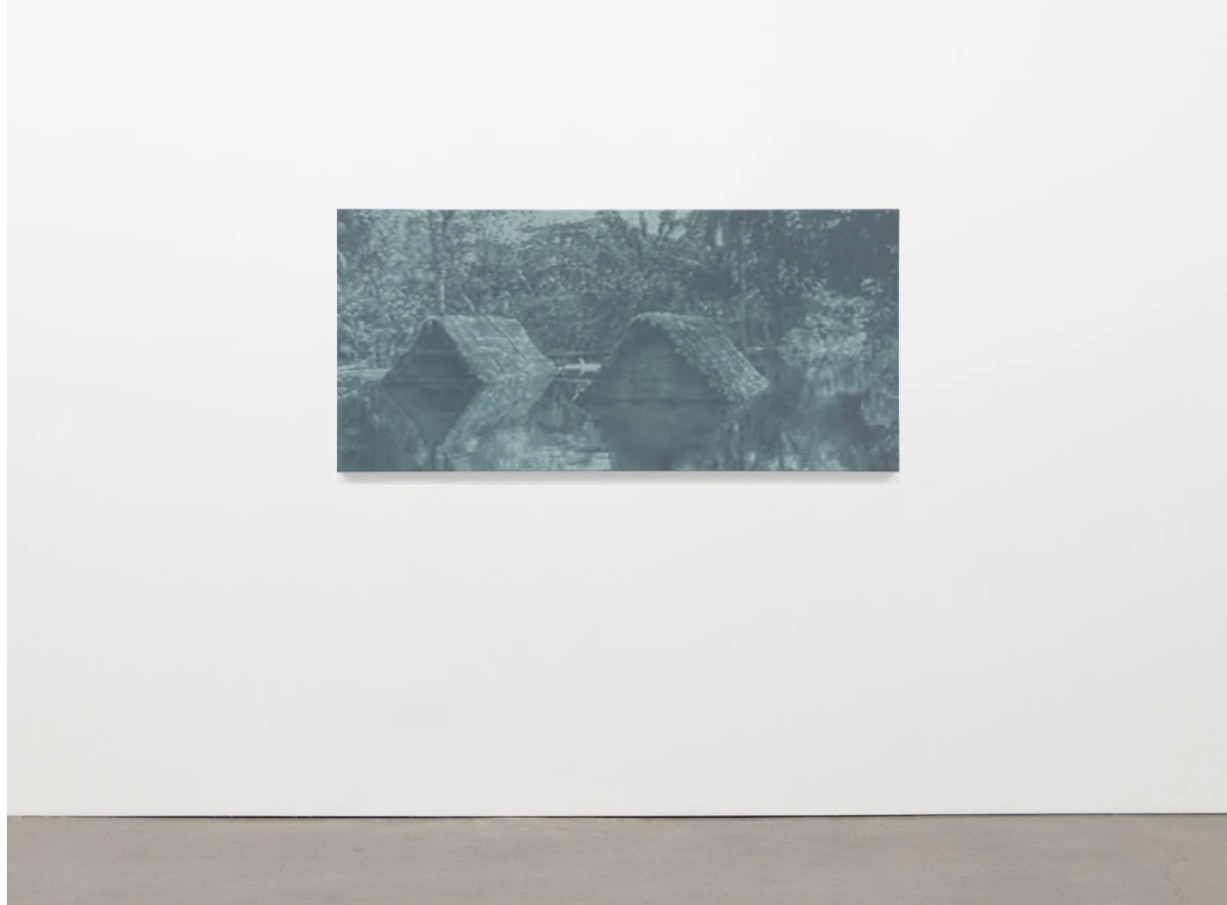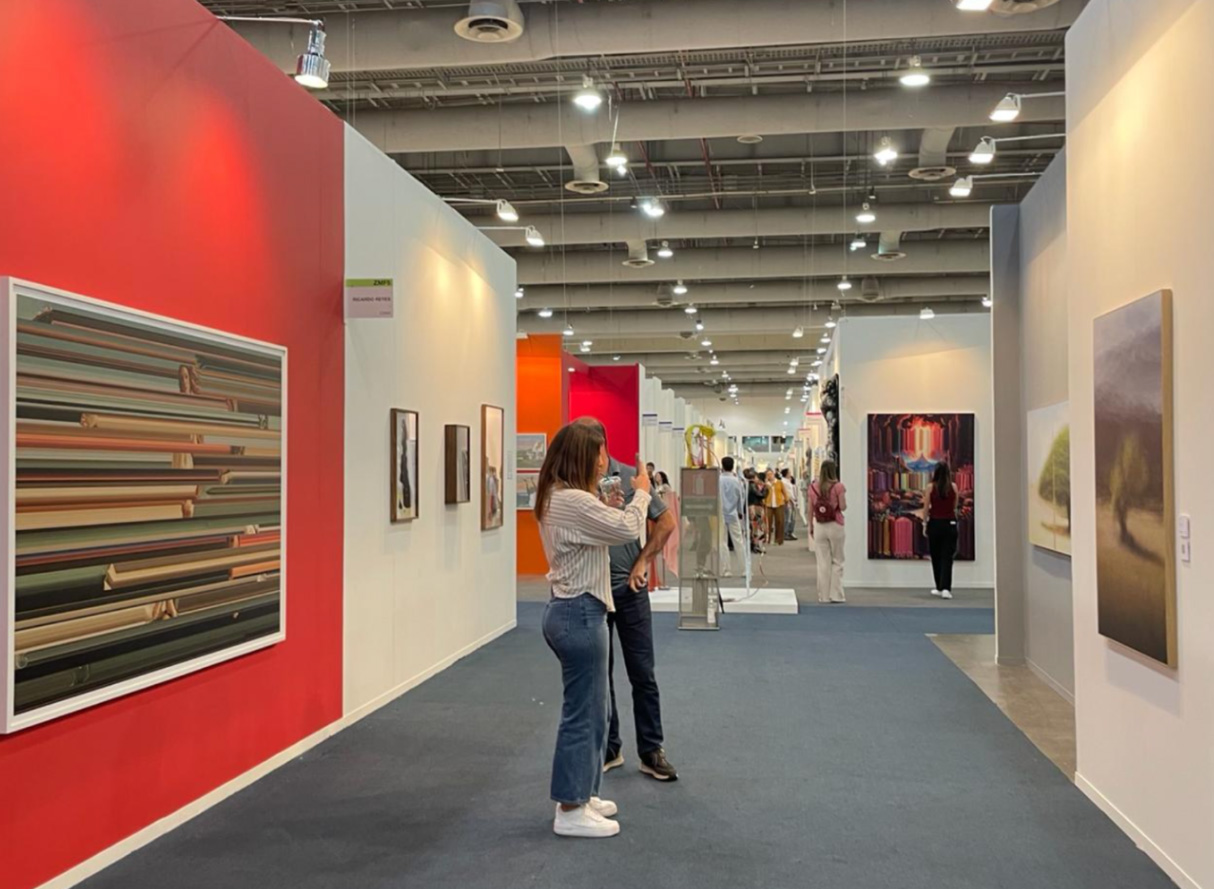The preeminent Latin American art fair, Mexico City’s Zona Maco, which ran from February 7 through 11, has become, like many other fairs across the globe, influentially significant for art fanatics, collectors, and scholars alike. A surplus of over 100 galleries from Europe, America, and Asia shared the large space of Centro Citibanamex for the event, displaying modern and contemporary art, design, photography, and antiques. Functioning as a reflection of Latin American artistic sentiment, Zona Maco echoes what such creative concepts represent and what it wishes to accomplish within the helter-skelter spirit of the continent by way of galleries both established and budding, and artists from across the globe.
Zona Maco’s largest section, the modern and contemporary art section, presented some of the most influential artists in Latin America and the global scene. Upon entering, one was welcomed into the main section, where recognized contemporary artists and established galleries joined each other in a maze-like structure that beckoned with color and distinguished names. Pace Gallery’s first appearance since the pandemic showcased hard-hitting artists such as Roberto Matta. The Chilean Surrealist’s untitled abstract composition from 1976 references the recalling of his nebulous poetic intuition and showcases an eerie chimerical landscape of blues and grays. Tara Donovan, Alicja Kwade, Robert Longo, and Mika Tajima were also amongst the select artists shown at Pace’s booth.
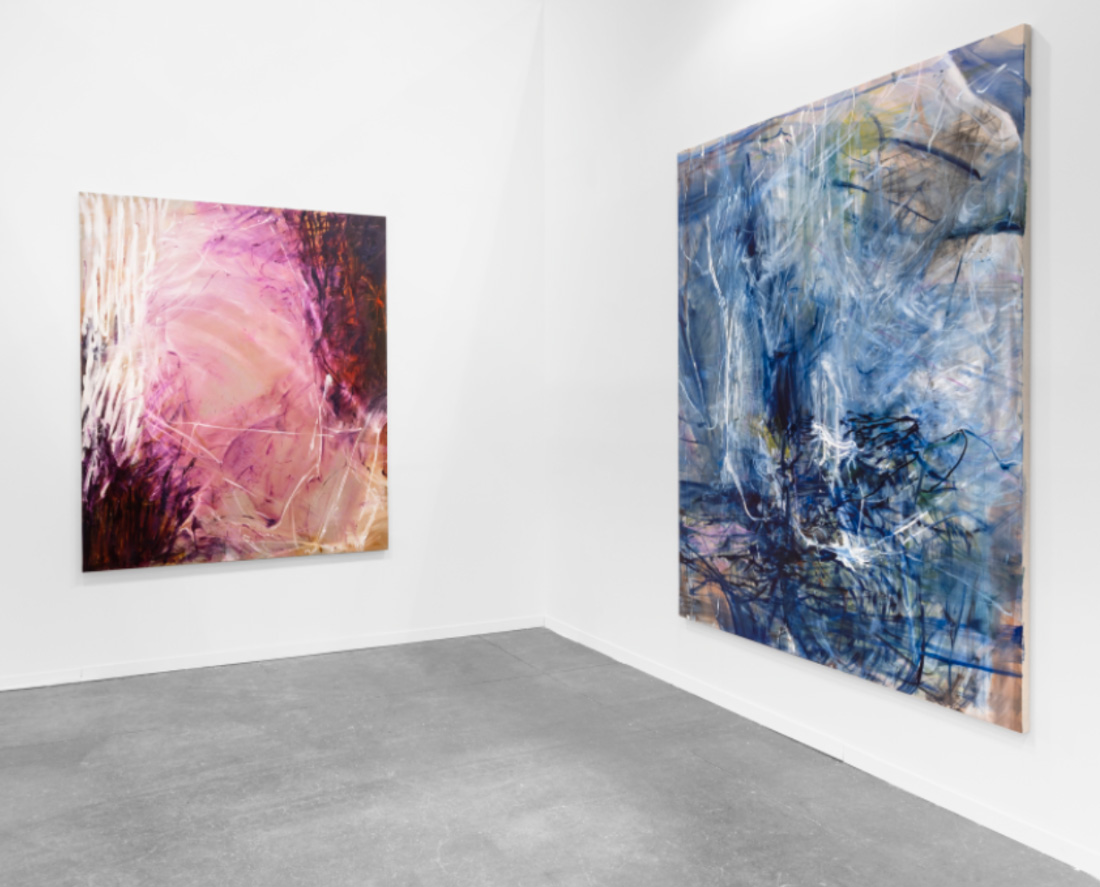
Installation view of Kirsty M Chan at The Artist Room’s booth at Zona Maco, Mexico City. Photo: The Artist Room
The Ejes section of the fair, curated by Bernardo Mosqueira, chief curator of the Institute for Studies on Latin American Art (ISLAA) in New York, presented artists who explore a relationship between what Mosqueira calls “pleasure and politics” — a heavy theme for an art fair. Hybrid spaces and budding galleries were paired in service of the illustrating bold stances, from gender non-conformity to political displacement. London’s The Artist Room displayed a solo exhibition for London-based artist Kirsty M Chan, who utilizes thick paint and bright colors reminiscent of Mexico City’s intense hues to comment on displacement and migratory practices. Mexico City’s Furiosa Gallery called upon six of its artists to come together in the creation of a special project being kicked off during the fair, where they assemble each of their experiences living and creating within the picturesque capital into one exhibition. Here, Cuban artist Bastian Silvestre’s sculptures recontextualize the displacement of objects and found materials that make them up to create a narrative of newfound lives and abandonment, alluding to the feeling of being re-born.
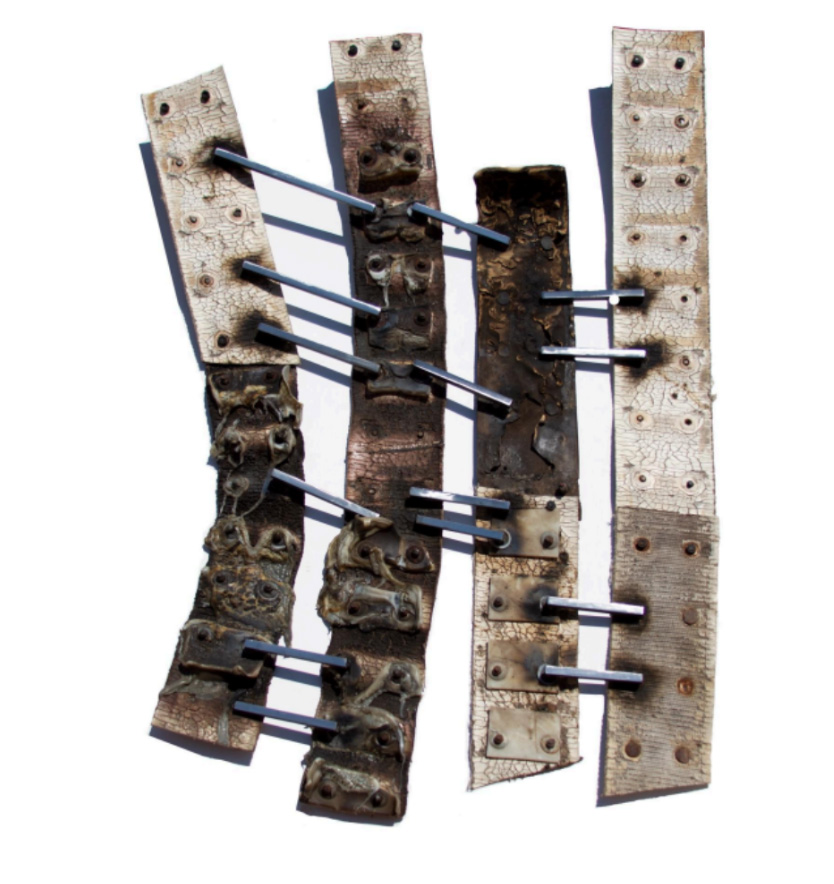
Bastian Silvestre, “Untitled,” 2023, acrylic film, peeled oxidized paint, roof pieces, 50 x 35 ½” x 5 inches. Photo: Furiosa.
Independent Brazilian curator Luiza Teixeira de Freitas platformed on the momentous concept of care and generosity — the needed counterpart to the themes of Eje — for the fair’s Sur section, focused on the Global South and the artists who work around or are engaged with the region. Copenhagen’s Brigade Gallery showcased the works of Alejandro Gonzalez (Cuba), Xavier Robles de Medina (Suriname), and Serge Attukwei Clottey (Ghana) in an exploration of social and artistic creativity and political discourses in the Global South.
Medina’s piece Dipi gron tiri (2015) examines the personal and the sentimental. Presenting two huts that have been inundated by tropical storms and are basking in the quietness that follows a natural disaster, Medina incorporates his experiences into reinterpreted scenes of power, freedom, and political details. Cisco Merel, a student and assistant of the late Venezuelan artist Carlos Cruz-Diez, who is represented by Mexico City’s Galeria Alfredo Ginocchio, incorporated the teachings of Cruz-Diez into his own abstracted work that tells of immigration and border issues. His works remind us of aerial views, the Earth, and architecture, in a Mondrian-like manner. Like Merel, many of the artists that had their work presented at this year’s installment of Zona Maco will be showing at the Venice Biennale happening later this year.
In its 20th iteration, Zona Maco did not disappoint. Its visitor-filled corridors and the lengthy traffic that circled around the block simply to enter the larger-than-life venue showcase its enduring popularity. Just as it opens its doors, crowds of collectors, curators, museum directors, artists, and visitors flood through. The cultural ecosystem crafted by the talented curators and selection committee of the fair marked an exemplary start to the year, especially with the opening of the Venice Biennale in just a few weeks. Zona Maco has, I believe, successfully reflected the interest of the art world, both in the themes it presents and in the enlightening pictorial works it brings together by a litany of international artists.
